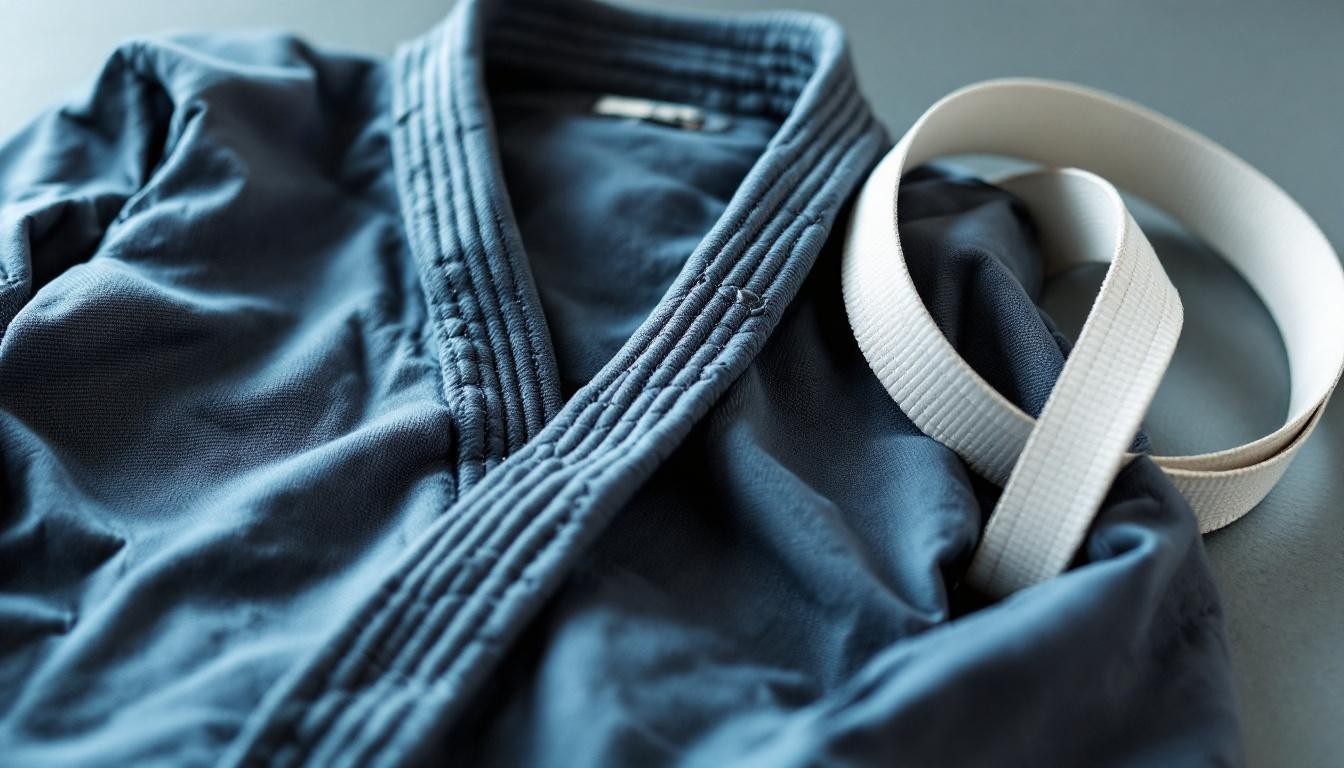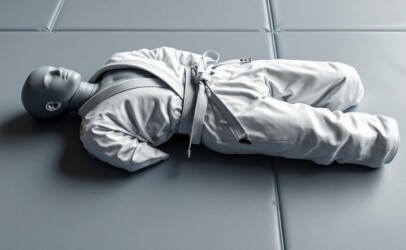At Jiu jitsu, we’re passionate about sharing the art of Jiu-Jitsu with our community. This ancient martial art combines strategy, technique, and mental fortitude to create a powerful system of self-defense and personal growth.
In this post, we’ll explore the philosophy behind Brazilian Jiu-Jitsu (BJJ) and dive into some of its key techniques. Whether you’re a beginner or an experienced practitioner, you’ll find valuable insights to enhance your BJJ journey.
The Roots and Essence of BJJ
The Birth of Brazilian Jiu-Jitsu
Brazilian Jiu-Jitsu (BJJ) traces its origins to the early 20th century. In 1914, Mitsuyo Maeda, a Japanese judoka and prizefighter, arrived in Brazil. He befriended the Gracie family and taught them his martial art. Carlos and Helio Gracie adapted and refined these techniques, which led to the creation of BJJ as we know it today.
The Gracie Revolution
Helio Gracie, physically smaller and weaker than his brothers, played a pivotal role in BJJ’s development. His discoveries emphasized leverage and timing over strength and speed. This innovation made BJJ accessible to people of all sizes and physical abilities, transforming the martial arts landscape.
The Core Philosophy of BJJ
BJJ’s essence lies in efficiency and problem-solving. It teaches practitioners to use their opponent’s energy against them, rather than trying to overpower them. This principle permeates every aspect of BJJ, from its ground-fighting focus to its emphasis on position before submission.
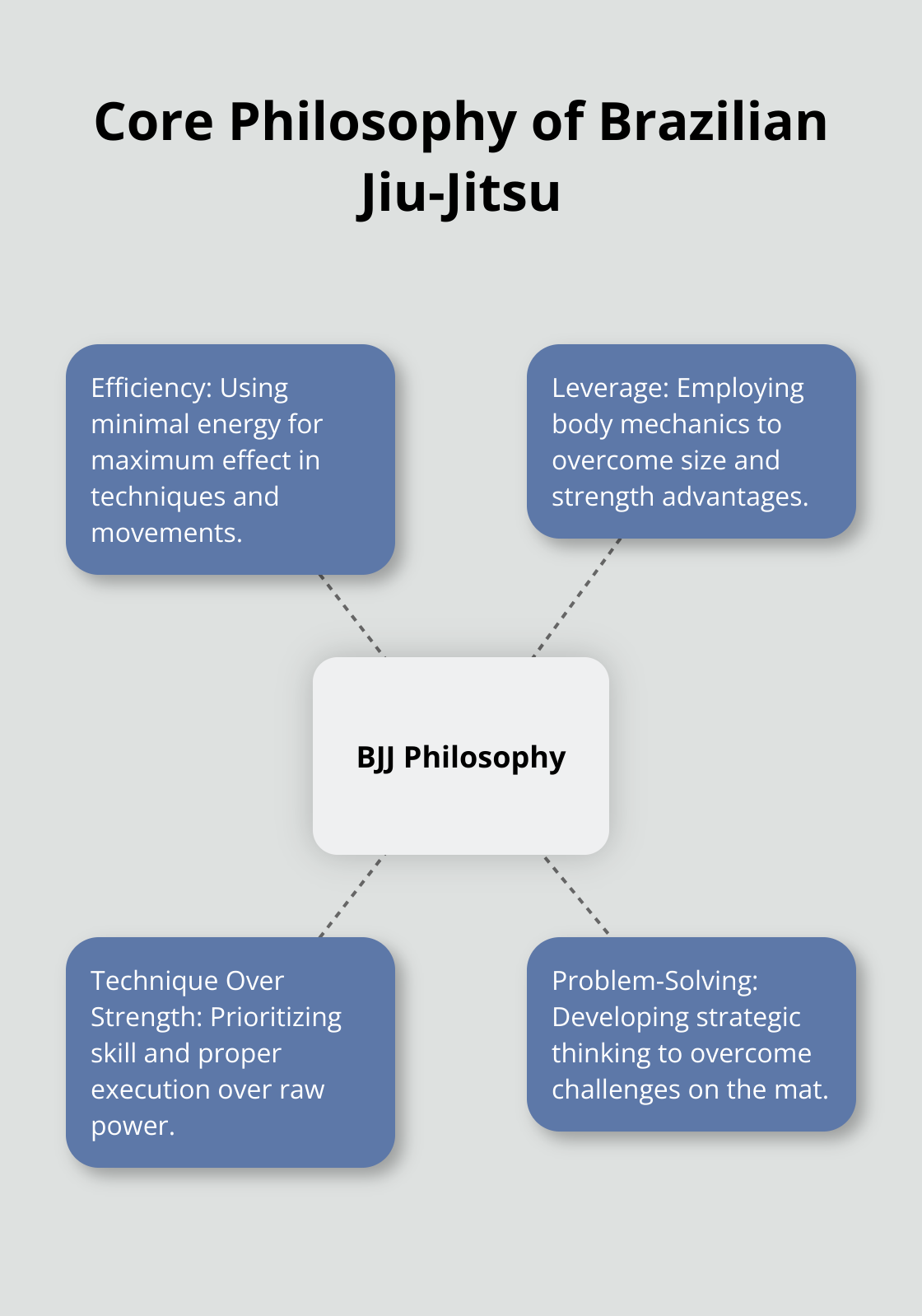
One of the most practical applications of this philosophy is in self-defense situations. BJJ equips smaller individuals with the tools to defend themselves against larger attackers. The guard position (a defensive posture where a person lies on their back) allows control and potential submission of an opponent who is on top.
Technique Trumps Strength
In BJJ, technique reigns supreme. A skilled practitioner can overcome significant size and strength disadvantages through superior technique. This isn’t mere theory – it’s been proven repeatedly in both competition and real-world scenarios.
Royce Gracie’s performance in the early UFC events serves as a prime example. Despite being smaller than many of his opponents, he dominated through his superior grappling skills. This showcased the effectiveness of BJJ techniques against other martial arts and larger opponents.
The BJJ Mindset
Beyond physical techniques, BJJ cultivates a unique mindset. It teaches patience, humility, and perseverance. Every mat session challenges you to problem-solve in real-time, often against stronger or more skilled opponents. This constant challenge builds mental resilience that extends far beyond the gym.
In BJJ, learning never stops. Even black belts (the highest rank in BJJ) continue to refine their skills and learn new techniques. This mindset of continuous improvement becomes a valuable life skill that BJJ practitioners carry with them in all aspects of their lives.
As we move forward, let’s explore the key techniques that form the backbone of this fascinating martial art. These techniques not only showcase the physical aspects of BJJ but also highlight how its philosophy translates into practical application on the mat.
Mastering BJJ’s Core Techniques
At Souza Grappling Co., we believe that understanding and practicing key techniques forms the foundation of BJJ success. Let’s explore the fundamental techniques that shape this martial art.
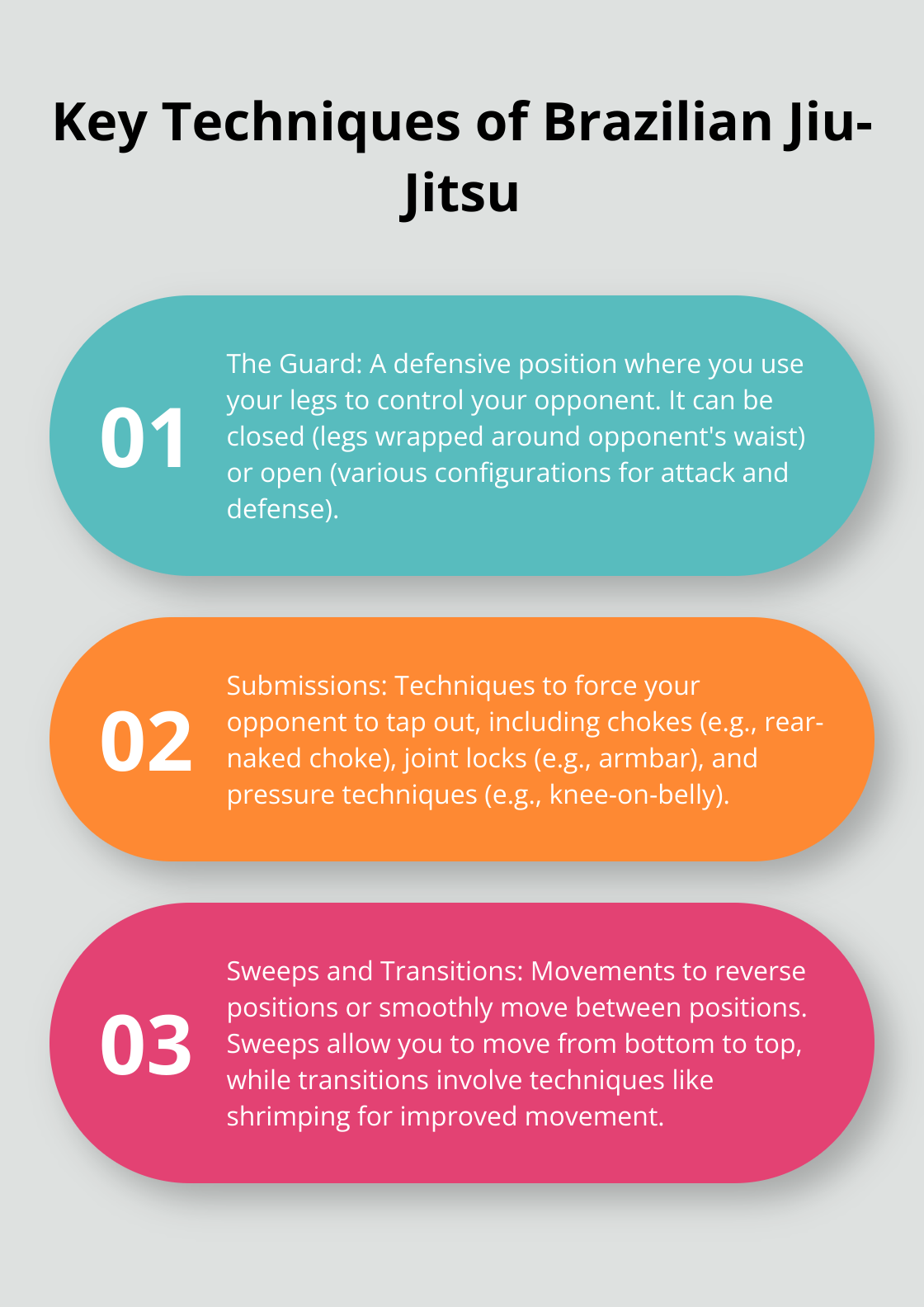
The Guard: Your First Line of Defense
The guard serves as a defensive position where you lie on your back and use your legs to control your opponent. It’s not just about defense; a good guard game can lead to submissions or sweeps. The closed guard (where your legs wrap around your opponent’s waist) provides a great starting point. As you advance, you can explore open guard variations like butterfly guard or spider guard.
Submissions: Ending the Fight
Submissions force your opponent to tap out. Chokes (such as the rear-naked choke or triangle choke) cut off blood flow to the brain. Joint locks (like the armbar or kimura) apply pressure on joints. Pressure techniques (including the knee-on-belly position) use body weight to cause discomfort.
Sweeps and Transitions: Gaining the Upper Hand
Sweeps allow you to reverse positions, moving from bottom to top. The hip bump sweep from closed guard offers an excellent beginner technique. Transitions involve smooth movement between positions. Practice shrimping (hip escapes) to improve your transitional movement.
Takedowns: Bringing the Fight to the Ground
While BJJ focuses on ground fighting, takedowns play a vital role in self-defense and competition. The double leg takedown (borrowed from wrestling) serves as a fundamental technique. For a more BJJ-specific approach, try the pull guard technique, which allows for time efficiency and game set-up. In sport jiu-jitsu, this technique can be particularly effective within the confines of the game.
These techniques represent just the beginning of your BJJ journey. Consistent practice will help you master these moves and discover countless variations and combinations. As you progress, you’ll find that the mental aspects of BJJ become increasingly important, shaping not just your physical skills but also your mindset both on and off the mat.
The Mental Game of BJJ
Developing a Strategic Mindset
BJJ demands constant problem-solving. Each roll presents a puzzle where you must anticipate your opponent’s moves while planning your own. To cultivate this strategic thinking:
- Analyze your rolls: After each session, reflect on what worked and what didn’t. Identify patterns in your opponents’ behaviors and your own responses.
- Study high-level matches: Watch competitions and break down the strategies employed by top athletes. The IBJJF World Championships offer excellent examples of high-level strategy in action.
- Plan your game: Before each roll, create a game plan. This doesn’t mean adhering to it rigidly, but having a direction helps you make quicker decisions under pressure.
Building Mental Resilience
BJJ will push you to your limits, both physically and mentally. Here’s how to build the mental toughness needed to thrive:
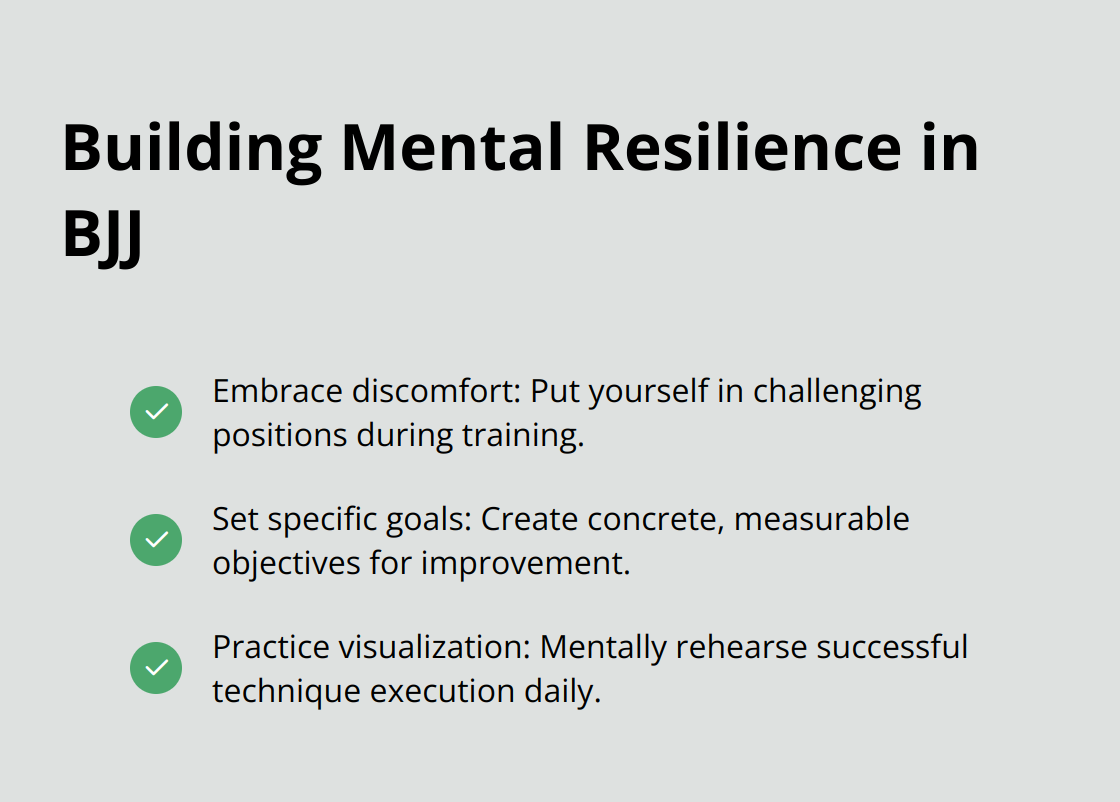
Cultivating Patience and Adaptability
Progress in BJJ rarely follows a linear path. Some days you’ll feel unstoppable, others you’ll struggle with basics. Here’s how to navigate this journey:
- Focus on the process: Instead of fixating on belt promotions or competition results, concentrate on daily improvements. This mindset shift can reduce frustration and increase enjoyment.
- Adapt your game: As you face different opponents, prepare to adjust your strategy. If your go-to moves don’t work, try something new. This flexibility is key to long-term success in BJJ.
- Practice active recovery: On days when you feel physically or mentally drained, consider lighter drilling sessions or yoga. This keeps you engaged with BJJ while allowing necessary recovery.
The mental aspects of BJJ extend beyond performance on the mat. The problem-solving skills, resilience, and adaptability you develop through BJJ can significantly impact your life off the mat as well (making you a more well-rounded individual).
Final Thoughts
Brazilian Jiu-Jitsu transcends mere physical techniques. It embodies a philosophy that transforms practitioners both on and off the mat. The art of Jiu-Jitsu teaches that leverage and skill can overcome raw strength, a principle applicable in many life situations.
BJJ demands strategy, resilience, and adaptability. These mental challenges build problem-solving skills and toughness that benefit practitioners in all aspects of life. The BJJ mindset of continuous learning becomes a lifelong journey, with each class offering new opportunities for growth.
We at Souza Grappling Co. invite you to experience the transformative power of Brazilian Jiu-Jitsu (our facility offers instruction in BJJ, Muay Thai, Yoga, and Self-Defense for all skill levels). Step onto the mat, embrace the journey, and discover how BJJ can change your life.

